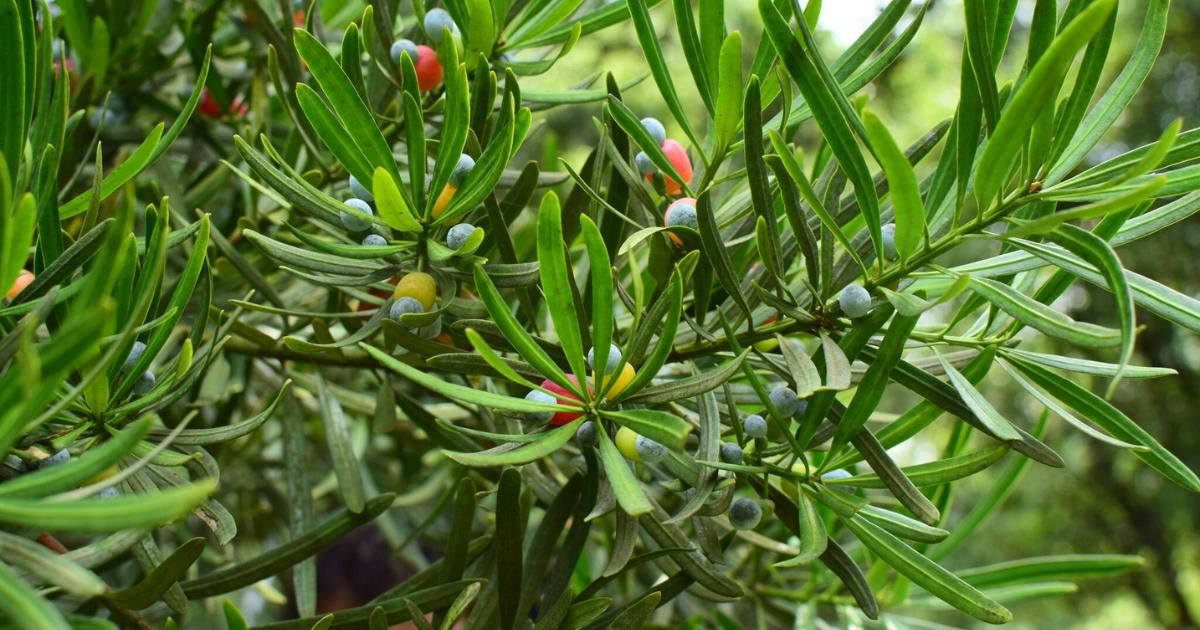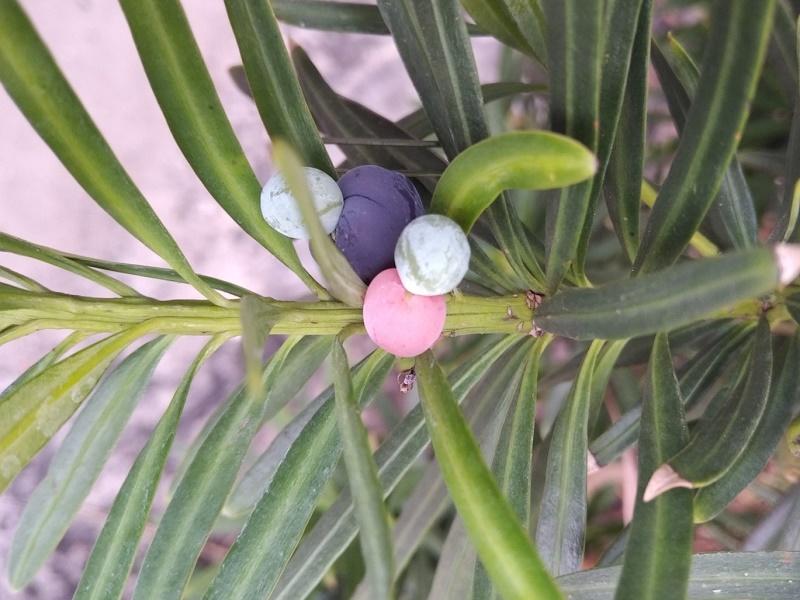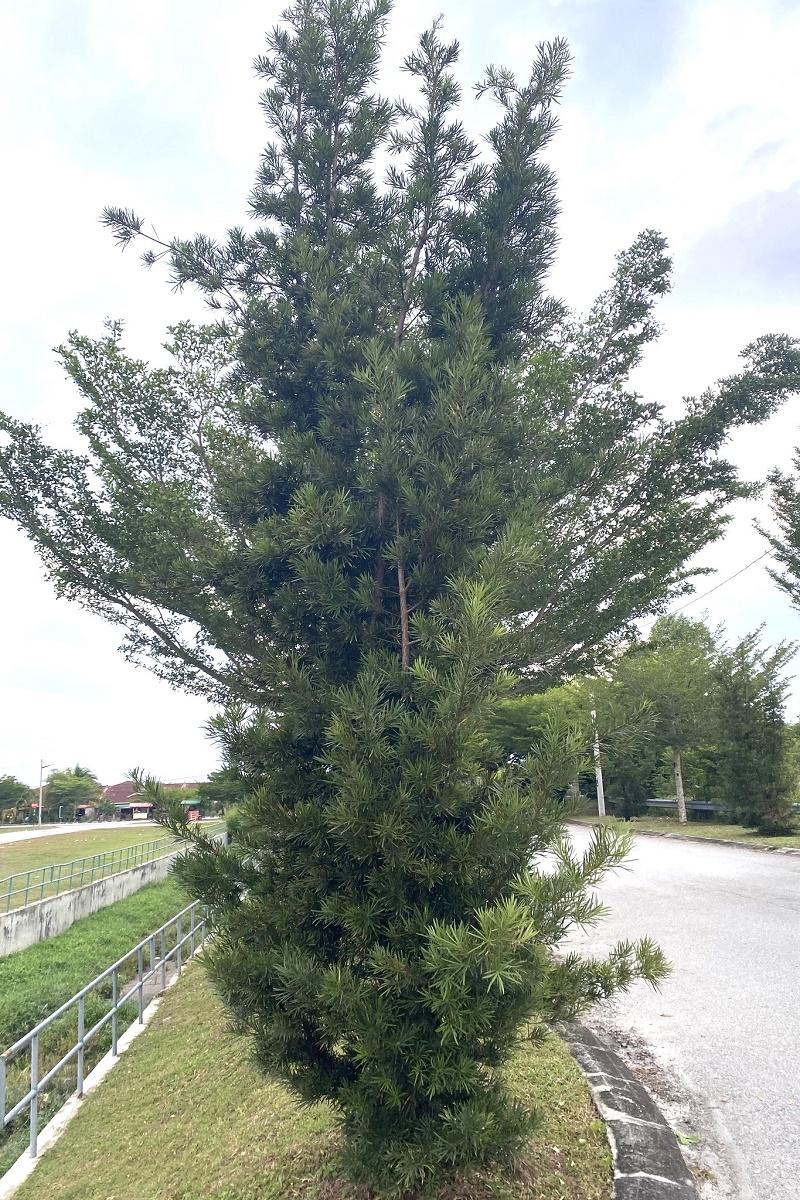Characteristics of Buddhist Pine (Podocarpus macrophyllus)

Buddhist pine (Podocarpus macrophyllus) is a coniferous plant in the genus Podocarpus in the Podocarpaceae family originating from Japan and China.
Common names for this tree include Yew Plum Pine, Buddhist Pine, and Fern Pine. In Japan, the Buddhist pine tree is referred to as Kusamaki and Inumaki. In China, it is known as Luóhàn Sōng or Arhat Pine.
The wood has a very high market value in Hong Kong, also used for the manufacture of quality wooden houses in Okinawa Prefecture, Japan.
The tree is popular as an ornamental tree in the yard and garden area, especially in Asia and the southeastern United States.
Buddhist pine is also one of the most popular trees for bonsai.
Characteristics of Buddhist Pine Leaves

The leaves are strands of 6-12 cm long and about 1 cm wide.
Characteristics of Buddhist Pine Fruit

The cone-shaped fruit grows on stems, and has 2-4 scales, usually 1 or 2 holes, each hole in the fruit carries a single apical seed measuring 10-15 mm. When ripe, the fruit scales will develop and turn reddish-purple.
Characteristics of Buddhist Pine Tree

This is a medium-sized tree, reaching a maximum height of 25 meters. This tree usually grows in the lowlands ranging from 10 m asl to 1,000 m asl in forests, open land, and savanna.
Leave a Reply